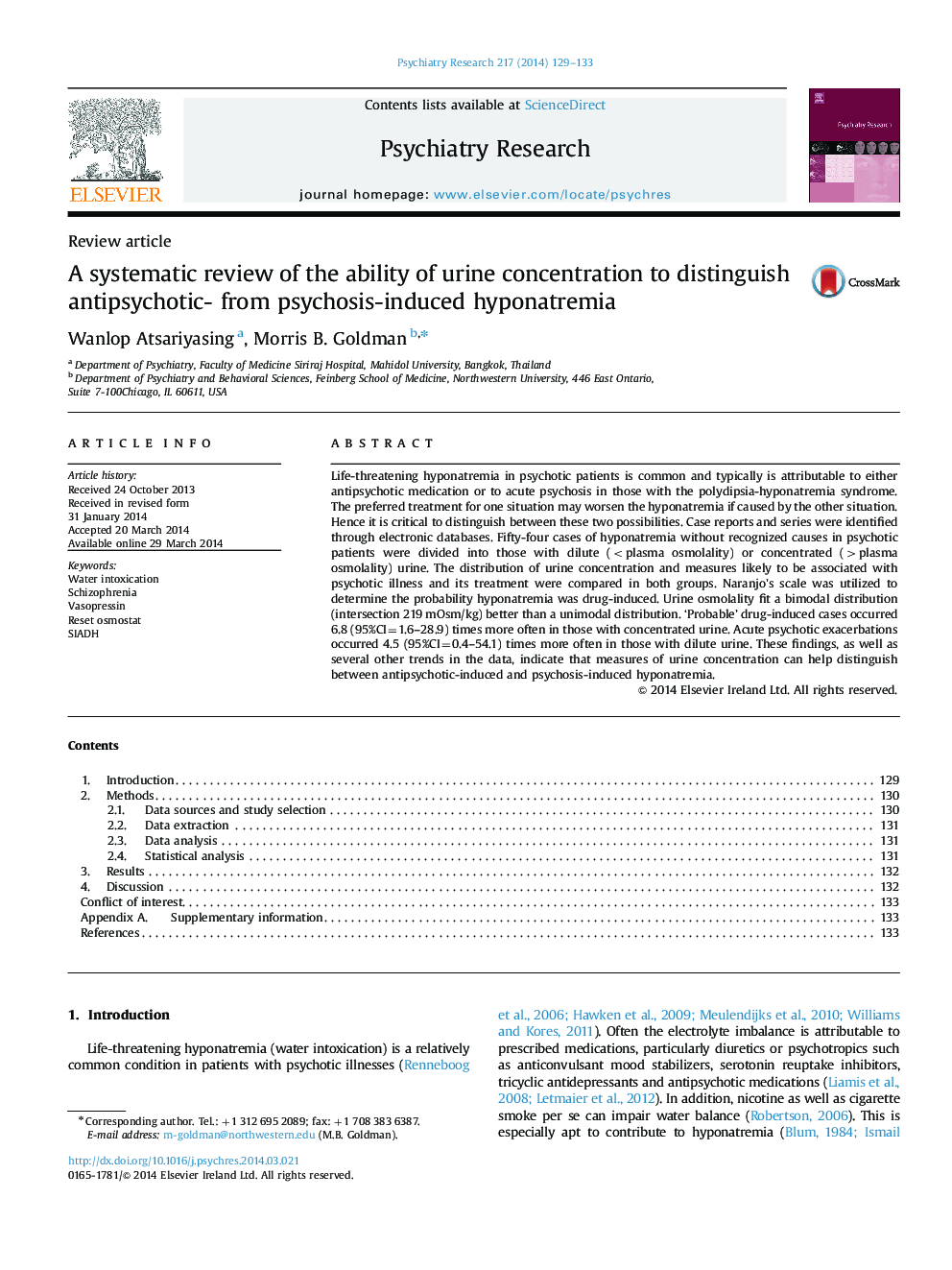| Article ID | Journal | Published Year | Pages | File Type |
|---|---|---|---|---|
| 332963 | Psychiatry Research | 2014 | 5 Pages |
Life-threatening hyponatremia in psychotic patients is common and typically is attributable to either antipsychotic medication or to acute psychosis in those with the polydipsia-hyponatremia syndrome. The preferred treatment for one situation may worsen the hyponatremia if caused by the other situation. Hence it is critical to distinguish between these two possibilities. Case reports and series were identified through electronic databases. Fifty-four cases of hyponatremia without recognized causes in psychotic patients were divided into those with dilute (
